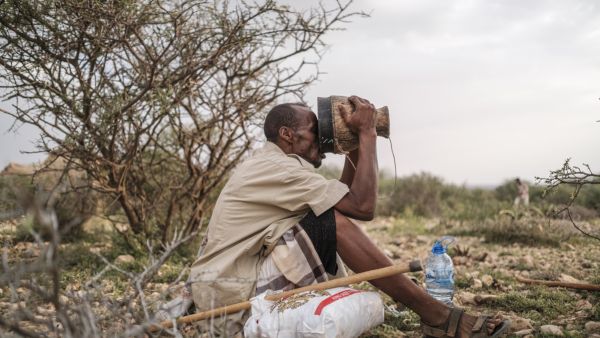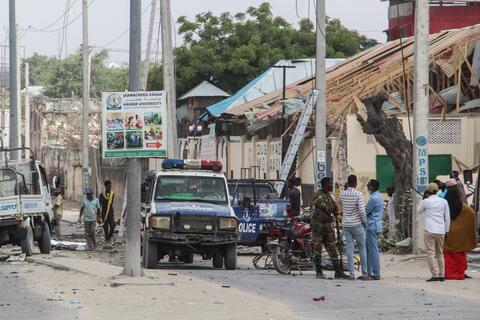Three consecutive dry seasons has left an estimated 3.8 million people in Somalia at risk of severe food insecurity through January, UNICEF revealed on Thursday.
And that figures will increase to 4.6 million by May.
DROUGHT ALERT: 'Historic multi-season drought to drive widespread and severe food insecurity' warns FSNAU-@FEWSNET.
— FAO in Somalia (@FAOSomalia) December 20, 2021
Scale-up of food, water, livelihoods assistance is urgently needed to save lives & livelihoods especially in South, Central, NE Somalia
➡️https://t.co/AnZdnOnxbn pic.twitter.com/3bP5gw9wUb
"Severe water shortages and rising food prices have left Somalia as the Horn of Africa's most severely drought-affected country," the UN said in a statement. "UNICEF’s Humanitarian Action for Children (HAC) appeal funding gap remains at 35 percent from the required $124 million.”
A total of 831,296 people -- 242, 622 girls, 271,586 boys, 163,090 women, and 153, 998 men -- received UN emergency water supplies through its water trucking and water point rehabilitation in Somalia in 2021, according to the statement.
The UN agency said it provided psychosocial support for 64,818 children and caregivers, with 66% being children.
Somalia declared a state of humanitarian emergency as the country faces its worst drought in decades.
The worst-affected regions for the drought and water shortages include Gedo, Bay, Bakol, Lower Jubba, Galgadud, Mudug, and parts of Bari, Nugaal, Sool, Sanaag, Togdheer, and Hiraan. About 2.6 million people are facing water shortages.
Somalia,drought has left affecting M. of people facing severe water scarcity & food insecurity. Lack of access 2 adequate safe H2O will repeate AWD/cholera scenario we experienced in 2017 where approx. 78k people affected & 1.15k deaths. Let us help. @ahmedvision1 @nasirarush pic.twitter.com/NhU0jcTO19
— Mohamednur M. Abdirahman (@MnurMAbdi) December 23, 2021
More than 2 million in 66 districts are in acute need and will require immediate lifesaving water, sanitation, and hygiene services for the next six months, the UN previously warned.
Among the most at risk are 1.7 million children and women who are exposed to protection risks due to limited water resources.
Somalia's drought, the worst in decades, has already claimed 13 lives, according to local officials.
The drought is compounding severe vulnerabilities and humanitarian needs caused by decades of protracted conflict and insecurity, climate shocks, and disease outbreaks.
This article has been adapted from its original source.











